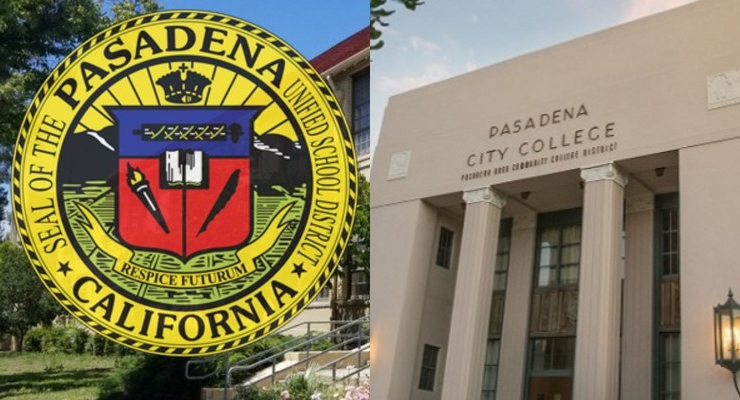After decades of heated debate about closing the 710 freeway gap led up to a climatic decision yesterday by Los Angeles County Metropolitan Transportation Authority board to kill the tunnel solution, focus now shifts to what options remain in the neverending 710 freeway story.
For the time being, a single point solution that connects the stubby, miles-apart endings of the 710 in Alhambra and in Pasadena, such as an above-ground freeway extension or now a below-ground tunnel, have all been deep-sixed in favor of major improvements to the existing roadways drivers are using to complete the transit.
The motion that was passed Thursday which quashed the tunnel carried with it a preference by the Metro Board of Directors to start planning the Transportation System Management/Transportation Demand Management (TSM/TDM) alternative as the preferred alternative.
That plan calls for “mobility improvement projects” such as street widening, better traffic signal coordination and other engineered improvements to local road networks in the gap between the 710 Freeway and Interstate 210 in Pasadena.
The awkwardly-labeled TSM/TDM alternative “is designed to maximize the efficiency of the existing transportation system by improving capacity on the local street system and reducing the effects of bottlenecks and chokepoints,” Metro said in a fact sheet.
“These relatively low-cost, low-impact strategies are geared toward enhancing all of the State Route 710 Build alternatives. TSM strategies include coordinated traffic signal timing to help relieve congestion, ramp metering to control the entry of vehicles onto a freeway, and minor street widening and intersection improvements to improve traffic circulation. TDM strategies promote carpooling, staggered work shifts and more transit use,” the fact sheet explained.
Looking back at previous discussions about the 710 alternatives, State Assemblyman Chris Holden said he considers Thursday’s Metro Board decision as “monumental.”
Holden said he believes Metro’s board has tried very hard to lay out a new path that hopefully will bring together bring the affected communities and move away from the contentious tunnel concept.
Holden said he believes the introduction of his Assembly Bill 287 last month helped clear the air for some of the Board members, and convinced them to vote to end the tunnel option.
“Certainly, the introduction of Assembly Bill 287 galvanized a lot of the conversation around this in a way that it was already happening in many respects, but highlighted the issue in a way that people could focus on it and started thinking about ‘If we were not to have a tunnel, what would be the next? How do we move this conversation and what is the best strategy for the region?’’’Holden told Pasadena Now.
“To that end, I’m excited about the fact that it creates a new day and a new opportunity to address some serious issues that affect not only the region but smaller communities like Alhambra, South Pasadena, portions of Pasadena and La Cañada Flintridge,” Holden said.
Holden stressed that although some cities did actively support the tunnel option, their positions were important for the issue to move forward toward solutions that can unify and harmonize the smaller communities that make up the 710 corridor.
After the vote Thursday, Holden said he’d be watching how Metro takes the decision toward a practical implementation stage.
“It’s simply going to be cities taking their part of the money and figuring out what they need to do to help with the traffic,” Holden said. “I think that’s important, but I think it’s also important to look at the continuity of these solutions and how they can be implemented across jurisdictional borders between all of these individual cities.”
State Senator Anthony Portantino said the vote by the Metro Board of Directors has taken “a giant step forward to finally ending the threat of the 710 tunnel project for our region.”
“I applaud the board’s focus on solving the 710 corridor’s regional traffic and circulation issues with local solutions funded by Measure R dollars originally intended for the tunnel. The efforts of three generations of freeway fighters played a tremendous part in making today’s vote happen,” Portantino said. “These tireless advocates are to be commended for recruiting so many of us into this fight. As the issue now moves to the California Department of Transportation for binding action, rest assured that I will continue to be the honest broker and strong advocate for the ‘no’ tunnel position, which moved significantly closer to reality today.”
Portantino recalled that over the past two decades, promises have been made and broken, when Metro moved toward starting construction on the tunnel option without first determining feasibility.
“They started two feasibility studies and both times cut them short before they could come to an accurate conclusion because they knew at the time that if they actually did the work, they would understand that the project wasn’t really feasible,” Portantino said.
Now, with the tunnel option gone, Metro would now be focusing on solving the local transportation problem and improve traffic on local streets.
“Remember, this tunnel was going to exaggerate the local circulation problem, not help the circulation problem,” Portantino said. “So I do think it is appropriate for Metro to be focusing on the unique concerns of the affected cities: South Pasadena, Alhambra, Monterey Park, El Sereno. Let’s solve the problem and let’s use taxpayer’s money proactively to solve local circulation and traffic problems. That’s what we should be doing.”














 0 comments
0 comments


